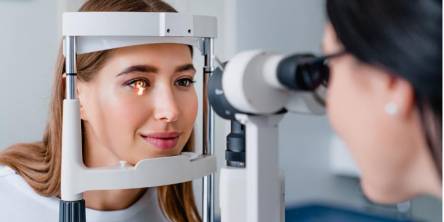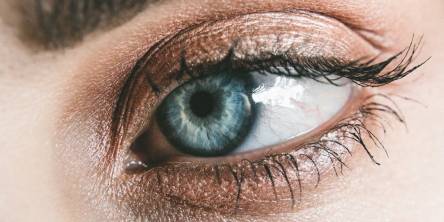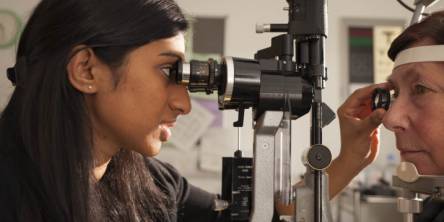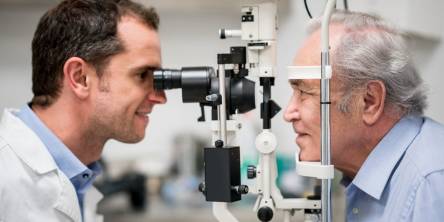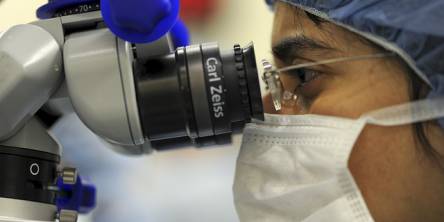6 Eye Diseases That Cause Blindness
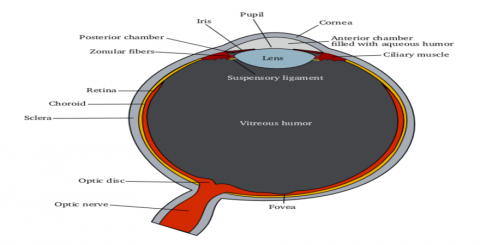
Eye diseases can be minor or major. Minor eye problems can be easily treated, they do not last for long. Major eye problems may lead to blindness. Hence, early detection and treatment could help us prevent vision loss. There are many familiar diseases today that lead to loss of vision.
Eye diseases causing blindness are:
Cataracts
Cataracts are clouding of lenses in the eyes. It decreases vision slowly. This may cause trouble during driving, reading, recognizing faces and such other things. Cataracts mostly occur at old ages. At the age of 80, more than half of the count in the world suffers from this disease. The main cause of cataract is due to age, but it may also be caused due to trauma or exposure to radiation. It can also develop due to diabetes, smoking etc. There are around 7.63 million cataract surgeries taking place in India every year. Treatment cost of cataract surgery is cost-effective in India. India is looking forward to eliminating cataract by 2020 latest.
Symptoms:
- Blurry Vision
- Colors seem faded
- Double vision
- Night Blindness
Prevention
- Avoid smoking
- Wearing sunglasses
Treatment for Cataracts
- Unifocal Cataract Surgeries
- Multi-Focal Cataract Surgeries
- Micro-Incision Cataract Surgeries
Glaucoma
Glaucoma is an eye disease that damages the optic nerve of the eye leading to blindness. Open-angle glaucoma is most common compared to closed- angle glaucoma and normal tension glaucoma.
Open-angle glaucoma is developed slowly without any pain, resulting in decreased side vision followed by central vision, causing blindness if not treated. Closed- angle glaucoma can happen suddenly; involving pain, redness of the eye, mild-dilated pupil, blurred vision, nausea. Glaucoma shows no symptoms initially unless examined. It cannot be cured, but can be controlled before it leads to blindness using eye drops or eye surgeries. Glaucoma can be hereditary.
Medical researchers have been taking place to find how to protect the optic nerve from damage. Various medicines are yet to be explored to lower the pressure on the eye nerve.
Symptoms
- Blurred vision
- Sudden sight loss
- Severe headache
- Pain in the eyes
Prevention
- Avoid smoking
- Limit Caffeine
- Avoid risks of glaucoma by using proper eye drops
Treatment for Glaucoma
- Express mini glaucoma shunt
- Trabecular meshwork
- Canaloplasty
Macular Degeneration
Macular degeneration, also known as age-related macular degeneration (AMD), leads to loss of vision. This disease destroys the central vision needed to see objects sharp and clearly. This affects daily sight-related activities like reading, driving, watching television, recognizing faces etc.
AMD affects macula, part of the eye that allows you to see finely. It kills the cells in the macula. The severity is divided into three phases- early, intermediate and late phase. There are two types of AMD – wet and dry. These types mainly occur in the late phase of macular degeneration. Wet AMD occurs due to abnormal growth of blood vessels behind the retina. Dry AMD occurs when the light- sensitive cells break-down; gradually blurring central vision slowly. It mainly occurs in older people. It may also be caused due to smoking or genetic factors. Once the vision is lost, there is no cure for returning vision.
Symptoms
- Visual field defect
- Contrast sensitivity
- Poor tolerance to changing light levels
- Need for brighter light
- Impaired depth perception
Prevention
- Eat well
- Avoid smoking
Treatment
- Injections
- Photodynamic therapy (PDT)
- Laser Treatment
Diabetic Retinopathy
As the name suggests, diabetic retinopathy is caused because of diabetes. It is also known as diabetic eye disease. It is an ocular manifestation of diabetes. It affects the light-sensitive tissues of the retina at the back of an eye, causing blindness. It has an adverse effect on more than half of the patients diagnosed with diabetes. Hence, diabetes patients are suggested to have eye examination done once a year. 90% of the cases of diabetes can be saved from blindness by proper monitoring and treatment of the eye. Initially, it starts with mild vision problems. If not examined and treated well, may lead to severe effects leading to permanent loss of vision.
Symptoms
- Spots in vision
- Fluctuating vision
- Blurred vision
- Impaired color vision
- Empty areas in vision
- Loss of vision
Prevention
- Control over Blood Pressure, and sugar
- Avoid smoking
- Healthy lifestyle
Treatment
- Eye surgeries
- Eye injections
- Laser treatments
Retinal Disorders
Retina is a layer of tissue in the back of an eye that is responsible for sensing light and sending images to our brain. In the center, there is a nerve tissue called the macula. It provides a sharp central vision that helps to read, write, drive, and perceive minute details.
Retinoblastoma is cancer of the eye. It is an uncommon disease. It affects the cells of the retina. It targets immature cells of the retina and light-detecting tissue of the eye. It can be caused due to a genetic disorder. Mutation of genes in the chromosomes can affect the way in which cells grow and develop within the body, Such alterations can give rise to retinoblastoma. It is mainly found in young children.
Symptoms
- Vision problems
- Pain in the eye
- Bulging of the eye
- Varied color of each iris
- Redness in the white area of the eye
- Bleeding eyes
Prevention
- Avoid prolonged exposure to the sun
- Avoid smoking tobacco
- Avoid exposure to radiations
Treatments
- Chemotherapy
- Radiation Therapy
- Cryotherapy
- Laser Therapy
Amblyopia
Amblyopia is a disorder of sight due to eye and brain not working well together. It is also known as lazy eye. It results in decreased vision of the eye sometimes. It occurs due to interference in focusing from childhood. It is difficult to detect and hence, eye testing must be done in early ages for children. Early detection can improve treatment measures.
Symptoms
- Poor stereo vision
- Poor pattern recognition
- Visual acuity
- Low sensitivity to contrast and motion
Prevention
- Wearing symmetrical nasal sectors
- Treatments
- Instilling topical atropine
- Patching
Conclusion
This article explains about various eye diseases that cause blindness. It also describes their symptoms, preventive measures, and treatments. Our eyes are one of the most important parts of our body. One should take good care of it by undergoing regular checkup to avoid any problems.
Similar Articles
Maintaining eye health becomes increasingly important as people age. This is especially true for seniors, who are more susceptible to vision problems and eye conditions. Regular eye exams benefit older adults by helping protect healthy vision and prevent severe eye diseases.
Maintaining good eye health is crucial for overall well-being, yet many people overlook the importance of regular eye exams. Whether you’re searching for a “walk in eye exam near me” or scheduling an appointment with your regular optometrist, understanding the benefits of these exams can help you prioritize your eye health
People with diabetes who take Ozempic are at risk of developing not only diabetic retinopathy but also cataracts, glaucoma, and dry eye. Some eye symptoms, such as dry eyes, might be caused by both an underlying health issue and a pharmacological side effect, such as semaglutide-induced dehydration.
In today's digital age, we are constantly exposed to screens of various devices such as smartphones, laptops, and tablets. While these technological advancements have greatly improved our lives, they also come with a downside - digital eye strain.
You don't have to wait until you have visual problems to consult with an ophthalmologist. Regular examinations are recommended to detect the earliest signs of eye disease. You don't want to risk losing your vision in any way. This is why it's important to understand when you should see an eye doctor.
Taking care of your vision and overall eye health is essential for maintaining a good quality of life as you age. Hence, it’s not a good idea to overlook those regular eye exams as they are a crucial aspect of eye care. Read on to explore the most significant reasons for scheduling an appointment with an ophthalmologist, as well as the importance of professional eye care and early detection of potential problems with your vision.
Chandraprabha vati is a standardized herbal formulation mentioned in our ancient texts. This medicine is a mix of various ingredients in a tablet (Vati) form. Chandraprabha vati is a Rasayan (Rejuvenator) and Balaya (Strengthening). It is an analgesic, antispasmodic, anti-hyperglycemic, and a good blood purifier. It is indicated in a number of disorders.
You should see an eye doctor once you turn 40 and then every year going forward. It's critical for them to test your vision because early detection can save significant trouble down the line!
There are millions of patients who every year correct LASIK by losing vision for myopia, farsightedness or astigmatism. LASIK refractive surgery is a cutting-edge technique that uses the excimer laser to correct many of the most common vision defects.


